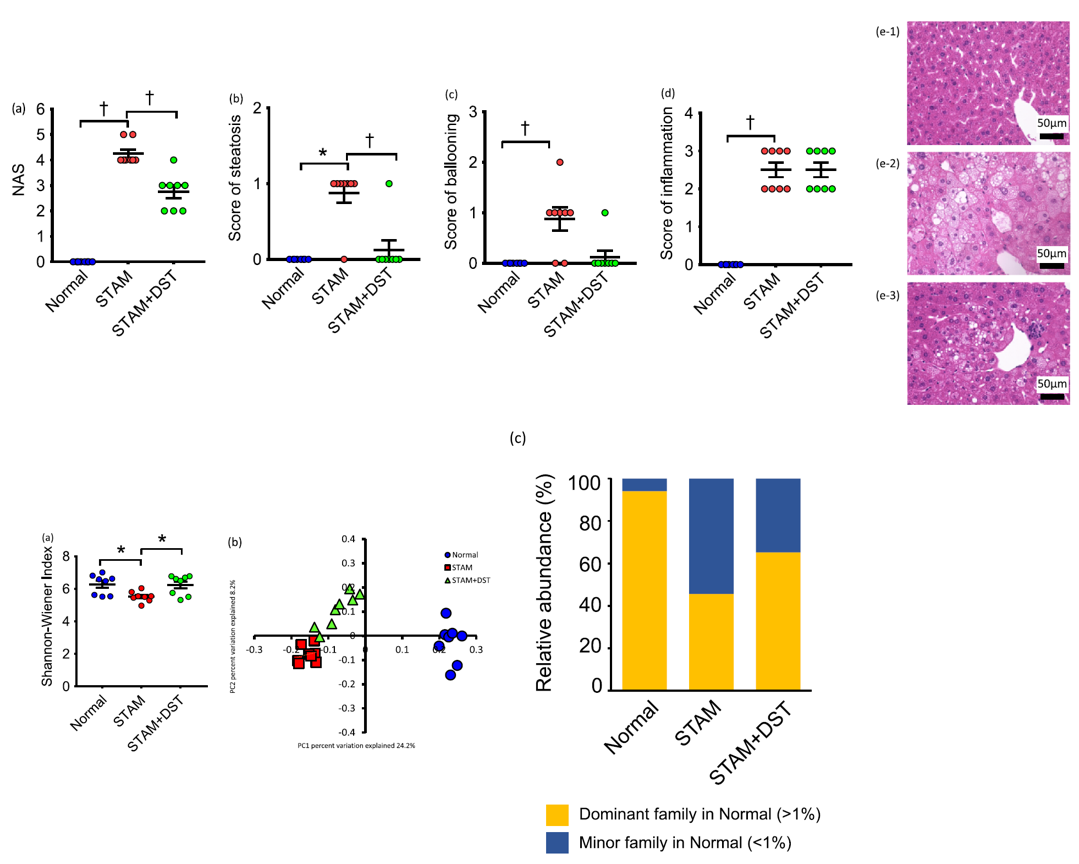Drug Efficacy Studies in NASH Mouse Model
Today, we would like to introduce a study published by our client, Tsumura, in which they used our pre-clinical services (Ishizawa et al., Gene. 2022) to test their compound in our proprietary NASH model called STAMTM.

To give you a little background on this model, the STAMTM mice have a diabetic background and follow the same disease progression as human patients do. They begin to develop steatosis at 6 weeks, then NASH at 8 weeks followed by liver fibrosis at 12 weeks, with the final stage, HCC, developing between 16 and 20 weeks.
In this study, Tsumura used the STAMTM model to test their product Daisaikoto. Daisaikoto is a drug that is currently available on the Japanese market and has been reported to improve fatty liver by changing gut microbiota composition.
It is well known that the gut-liver axis and gut microbiota both play a significant role in the development of NAFLD and NASH.
Blood from the intestine to the liver is supplied by a blood vessel called the portal vein. Bacteria, bacterial metabolites and toxins originating from the gut can easily affect the liver via the portal vein.
In fact, it has been reported that in humans and STAMTM mice, dysbiosis caused by changes in the gut microbiota is associated with the onset and worsening of NAFLD and NASH (Lixin et al., Hepatology, 2012; Jay et al., CMGH, 2015; Guoxiang et al., Oncotarget., 2016).

In this study, STAMTM mice were treated with Daisaikoto from the fatty liver phase to the early NASH phase. It was found that that the NAFLD activity score (NAS), the main endpoint for evaluating fatty liver, was significantly lower in the STAMTM mice that were treated with Daisaikoto compared to those which were not.
The diversity index of the gut microbiota and the ratio of the normal major constituent bacteria, which are lower in the untreated STAMTM mice compared to the normal mice, also showed an improvement in the STAMTM mice that were treated with Daisaikoto.
Tsumura’s study successfully demonstrated that improving the gut microbiome has the potential to be a useful treatment for both NAFLD and NASH.
If you have a probiotic or prebiotic that is able to improve the gut microbiome or a compound that has a positive effect on bowel diseases, why not try it out in this model?
We will use our years of experience to provide you with a study design that will help you to successfully further your project.
